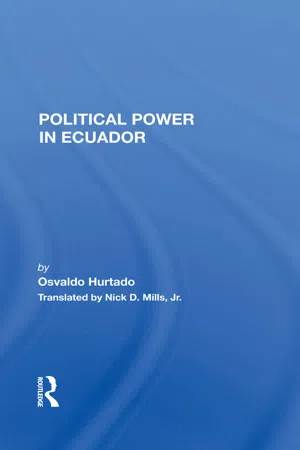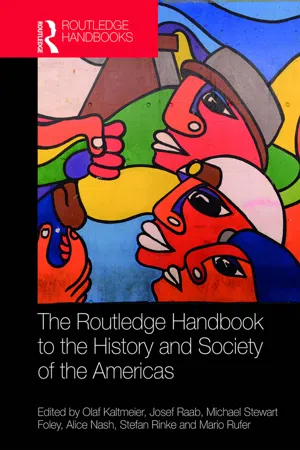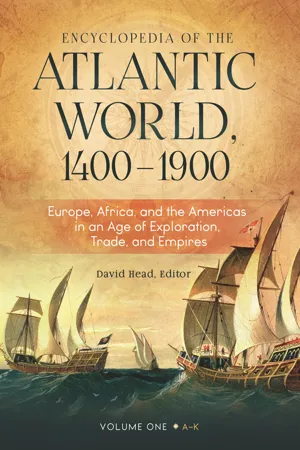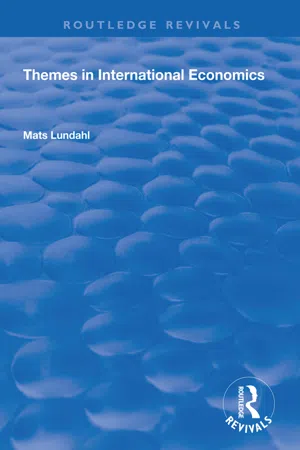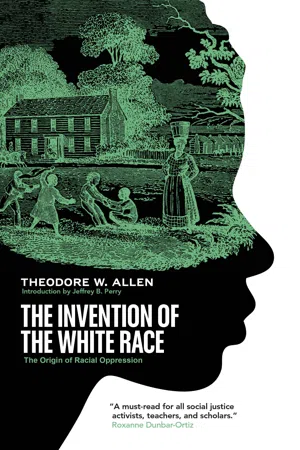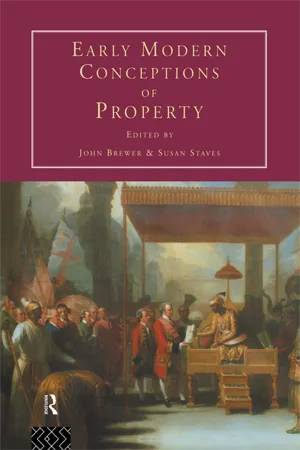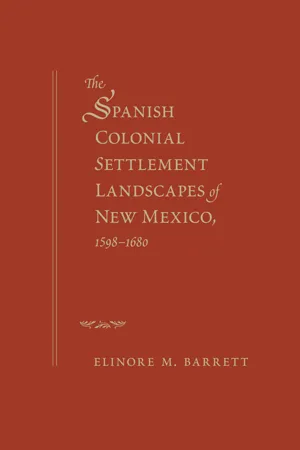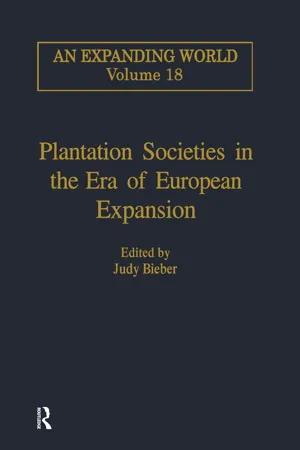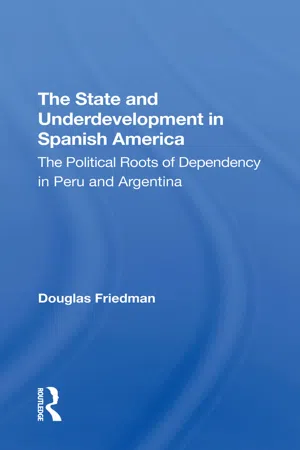History
Encomienda System
The Encomienda System was a labor system established by the Spanish crown in the early colonial period of the Americas. Under this system, Spanish conquistadors were granted the right to extract labor and tribute from indigenous communities in exchange for protection and Christianization. The system was highly exploitative and contributed to the mistreatment and abuse of indigenous peoples.
Written by Perlego with AI-assistance
Related key terms
11 Key excerpts on "Encomienda System"
- eBook - ePub
- Osvaldo Hurtado(Author)
- 2019(Publication Date)
- Routledge(Publisher)
3In practice, the encomienda did not always adhere to the precise juridical guidelines laid down by the Crown. A royal decree sent to Francisco Pizarro in 1536 specifically prohibited forced labor by encomienda Indians; this prohibition was confirmed in the New Laws issued by Charles I of Spain in 1542, the first legislation of a general nature to prohibit explicitly the enslavement of the Indians and in general all forms of personal servitude. These measures were further ratified in decrees of 1549 and 1601, to the extent that by 1680 the institution of encomienda figured in the Code of the Indies independently of slavery, personal servitude, and forced labor.4 In the following years, because of pressure from the defenders of the Indians, the impotency of the metropolis in halting the abuses of the system by encomenderos, and the loss of the tributary function of the encomienda, an effort was made to suppress the institution altogether: in 1701 the king ruled that all encomiendas assigned to individuals not living in the New World would revert to the Crown; in 1703 the Crown assumed direct control over the media anata [a tax paid by ecclesiastical and secular officials on assuming office]; in 1707 it reasserted royal control over lesser encomiendas; finally, on November 23, 1718, the king ordered the reincorporation of all encomiendas, and on July 21, 1720, the institution of encomienda was abolished entirely.5 - Olaf Kaltmeier, Josef Raab, Mike Foley, Alice Nash, Stefan Rinke, Mario Rufer(Authors)
- 2019(Publication Date)
- Routledge(Publisher)
These new forms of forced labor were known as repartimiento de indios, the distribution of prisoners of war and female slaves as loot or the naboría, with women forced to perform household and sexual services, and men to wash gold, dive for pearls, or work as porters (→ Gender and Work, II/11). Another form was the Andean mita, deriving from the Inca Empire, which included the regular but temporary provision of laborers. Another form of forced labor for the indigenous population, the encomienda, was introduced soon after the conquista. Its purpose was to control the indigenous population and reward the conquistadors. Each conquistador was allocated land and laborers, and in return had the obligation to convert them to Christianity (→ Religion and Missionizing, I/17). De facto, however, the focus was always on the exploitation of indigenous labor rather than on conversion to Christianity. After the prohibition on enslaving indigenous people at the beginning of the 16th century, the encomienda became the most important system of forced labor in the early colonial period. It proved impossible to fully enforce a ban on the encomienda issued in 1542, but as a consequence of the dramatic fall in population, the significance of the encomienda declined in the course of the 17th century. In marginal colonial regions, however, it remained until the end of colonial times (Belaúnde Guinassi 1945; Zavala 1978, 1992). Exploitation through this Encomienda System was part of what prompted the Dominican Fray Bartolomé de las Casas to publicly criticize the brutal treatment of indigenous laborers to the Spanish Crown- eBook - ePub
Encyclopedia of the Atlantic World, 1400–1900
Europe, Africa, and the Americas in an Age of Exploration, Trade, and Empires [2 volumes]
- David Head(Author)
- 2017(Publication Date)
- ABC-CLIO(Publisher)
Lincoln’s Proclamation: Emancipation Reconsidered . Chapel Hill: The University of North Carolina Press.Franklin, John Hope. 1963. The Emancipation Proclamation . Garden City, NY: Doubleday.Guelzo, Allen C. 2004. Lincoln’s Emancipation Proclamation: The End of Slavery in America . New York: Simon & Schuster, Inc.ENCOMIENDA SYSTEMFrom the Spanish for “entrustment,” the Encomienda System (1503–ca. 1720) was established by the Spanish Crown shortly after the conquest of the Americas as a labor and land leasing system in its American colonies. Spain allocated the land and labor of indigenous populations throughout Spanish America to Spanish overseers. Known as encomenderos , they directed the work of the land with the help of an Indian chief known as a cacique. This system was meant to facilitate the production and trade of agricultural and other highly profitable goods and to educate the conquered populations of Indians. Caciques as well as their indigenous subordinates, however, suffered great abuses under this system. As a result, the encomienda system allowed for the extraction of valuable raw materials from the American colonies and thus was a major contributing factor in the extinction of many indigenous populations.Spaniards were familiar with an encomienda system of labor, having implemented a similar arrangement during the Reconquista, the Christian reconquest of the Iberian Peninsula from the Moors between 718 and 1492. Queen Isabella (1451–1504) ordered the establishment an encomienda in the Americas in 1503.Officially, encomenderos entered into a royal partnership with the Crown and were entrusted with protecting and educating the Indians they were given under their encomienda . In return for these services, the Indians would pay tribute and offer their labor. The Spanish Empire was responsible for introducing and converting the Indians to Catholicism. Since it was easier to reach scattered populations of Indians via these land leases and labor grants, the task was transferred to the encomendero. An encomienda - eBook - ePub
- Mats Lundahl(Author)
- 2018(Publication Date)
- Routledge(Publisher)
His theory was judged to be inhumane and the encomienda was taken to represent an illegitimate private authority over the Indians, one which created an aristocracy with vested interests that stood in the way of the rights of the Crown in Indian affairs. Hereby, the power of the Crown over the settlers in the New World was greatly strengthened. When it came to the Indians, on the other hand, Las Casas’ victory had virtually no practical effects. Already in 1545, the provisions in the New Laws that abolished the encomienda were revoked. However, the encomienda that hereby came into effect differed from the previous system in that it did not entail any right to Indian labor. Instead, the villages paid tributes to the encomenderos. 107 This, however, did not mean that the Indians escaped labor service. The discovery of silver at Potosí and Zacatecas in combination with a devastating epidemic in New Spain in 1545 and 1546 made for an acute labor problem for the Spaniards which somehow had to be solved, since mining created a great demand for labor. The demand for labor increased even further in response to the application of the mercury amalgamation process, which was taken into use in New Spain in the late 1550s and in the Andes at the beginning of the 1570s, and which enabled the refining of low-grade ores. 108 The solution consisted in compulsory recruitment, known as repartimiento in New Spain and mita in Peru. In this system, Indian villages and towns had to supply a fixed proportion of its males for work for a given number of weeks, in rotation, on such tasks for which the use of repartimiento labor had been authorized, e.g. mining - eBook - ePub
The Sweat of Their Brow: A History of Work in Latin America
A History of Work in Latin America
- David McCreery(Author)
- 2016(Publication Date)
- Routledge(Publisher)
Chapter 2 The Colonial System, 1550–1750T he Crown’s goal for the New World was a labor force that was able and willing to freely contract its work for wages. The Catholic kings had outlawed vagrancy and ended serfdom in Spain, and for a half century after the Conquest the state struggled to implement a free work regime in the colonies. Black slavery did not contradict this policy because the Crown did not consider the captured Africans citizens, whereas the indigenous inhabitants of the New World emphatically were. But the Indians generally were not eager to work for the Spanish. Most saw little reason to seek out the meager wages and difficult conditions offered. They had to pay taxes, and fees to support the new religion, but until at least the end of the sixteenth century, and in many areas much longer, these could be paid in kind, in the Indians’ own products. Alternatively, they could obtain what they needed by trade or by gathering it in the wild. Much of the indigenous population at least initially was able to satisfy its tax liabilities, and even to obtain money to buy new consumer goods, without directly entering the Spanish economy, and, particularly, without working for the Spanish.If the Indians did not work voluntarily they would be made to work, for their own moral good and to sustain the state and church. As the Crown reined in the encomiendas and brought an end to the enslaving of indigenous peoples in the central areas, the Spanish and creole elites, the Indians, and the state worked out forced wage labor systems, called variously repartimientos or mitas. These had different histories in different parts of the empire, but where forced wage labor did not soon disappear it tended to calcify into a “custom” (costumbre) - eBook - ePub
The Invention of the White Race
The Origin of Racial Oppression
- Theodore W. Allen(Author)
- 2021(Publication Date)
- Verso(Publisher)
13The native population did not willingly submit to such brutal administration. In Hispaniola the Maguana people rose in revolt after the treacherous Spanish killing of the captive Maguana chief Canaobo.14 In 1511 in Puerto Rico, the Borinqueños under the leadership of a cacique named Guaybana mounted a major rebellion against the imposition of the Spanish system of forced labor. A second Borinquen uprising was led by another cacique , Humacao, four years later.15 Other Borinqueños, possibly one-third of the population, sought refuge in remote mountainous areas, or fled by boat to other islands.16 But in Haiti (Hispaniola/Santo Domingo) and Cuba, the Spanish advantage of overwhelming military strength exerted without restraint, in the context of the even more devastating toll of epidemic European diseases, resulted in almost complete extermination of the native population. There it was a mathematical certainty that without an intermediate social stratum, “social control” by mere unbridled military force would be self-defeating because it exceeded the limits that had to be observed to preserve an exploitable labor force.Social Control: Mexico and PeruAt the time of the Spanish invasion in 1519, the population of central Mexico,17 an area of about 200,000 square miles, was an estimated 13.9 million,18 representing a density of almost 70 people per square mile. Of this population, 2.5 million, concentrated more than 350 per square mile, lived in the 8,000-square-mile area in and near the Basin of Mexico.19 - eBook - ePub
- John Brewer, Susan Staves(Authors)
- 2014(Publication Date)
- Routledge(Publisher)
The indigenous population of the Jesuit missions began to grow fairly rapidly after the middle of the seventeenth century, as it was successively freed from the slave raids and the labor services required by the encomienda mitaria. That of Franciscan missions – which was subject to the encomienda – also began to rise, but much later, as the middle of the eighteenth century approached, and comparatively more slowly. Nevertheless, privately held encomiendas did not now regain their past importance, even after large numbers of indigenous people became potentially available for entrustment following the Jesuits’ expulsion in 1767. Private encomiendas increasingly reverted to the Crown, but remained legal until just after the turn of the century, and in practice persisted until the end of the colonial period.The free mestizo peasantry, on the other hand, flourished, under the impulse of population growth and the transformation of some former Jesuit mission dwellers into peasants. Family farms spread in particularly rapid fashion in the last four decades of colonial rule, after the Bourbons liberalized – in the 1770s most notably – international trade restrictions imposed by the Hapsburgs in the previous century. As population and immigration increased, free land became progressively more scarce, the lands of the pueblos de indios were encroached upon by strangers, and sharecroppers and landless peasants appeared. The indigenous towns, unlike the encomienda, were not abolished during the colonial period and persisted beyond independence until the middle of the nineteenth century.Any set of stylized economic facts must be seen through the prism of a certain body of economic theory and interpreted in terms of that theory. I will approach the problem neoclassically; that is, I will attempt to account for the stylized facts as behavior arising from constrained maximization. Since I seek to explain property rights on laborers and the institutional structure that evolved to enforce them, as well as the manner in which one set of property rights and enforcement institutions evolved into another, property rights will be determined endogenously and changes in property rights will result from changes in parameters. However, once a particular set of property rights and enforcement institutions has appeared, it becomes a behavioral constraint, part of the datum within which agents maximize. More precisely, the rise and decline of indigenous labor coercion will be seen to have resulted from the rent-seeking behavior of individuals and the state subject to changing relative factor prices and transaction costs constraints. - eBook - ePub
Foundations of Modern Slavery
Profiles of Unfree and Coerced Labor Through the Ages
- Caf Dowlah(Author)
- 2021(Publication Date)
- Routledge(Publisher)
To world-system theorist Wallerstein (1974), ‘feudalism’ is not even a meaningful category for understanding colonies or peripheries drawn into the world economy in the sixteenth century. To him, in colonial societies, merchant capital was allied with imperial political power in a fluid environment in which merchant capital exerted aggressive and transformative social relations of production and labor relations dictated by needs of the core countries or the world-system as a whole. Thus, even the servile-labor of serfs in medieval Europe were ‘coerced cash-crop labor’ imposed by the Western European capitalism. Also, to him, capitalism itself does not necessarily entail the replacement of coercive labor relations by free wage-labor as Marx professed, but it rather entails an optimal combination of free and coercive labor relations beneficial to the capitalist system as a whole.Latin American Context
In the context of Latin America, the encomiendas and the haciendas have been interpreted as feudal institutions throughout the nineteenth century, but in the twentieth century, especially since the 1940s, scholarly debate emerged whether Latin America had a stage of feudalism as a historical pattern of all societies or it skipped the stage altogether with the Spanish conquest and consequent integration of the region into Eurocentric global capitalism.Those who emphasize the feudal character of the encomiendas/haciendas interpret Spanish America as closed societies which were resistant to change and unintegrated into market economy. Arguing from the vantage point of the Marxian concept of feudalism, they emphasize that these institutions existed in a natural economy where wealth was based on privately controlled land, landlords extracted surplus from the peasantry by extra-economic coercion, production was not geared for the market, and peasants usually owned small plots of land. - Elinore M. Barrett(Author)
- 2015(Publication Date)
- University of New Mexico Press(Publisher)
8Only a partial picture of the encomienda establishment in New Mexico is available because records of such grants were destroyed in the 1680 revolt (or otherwise lost), and no copies have been discovered. What is known comes from passing references in other documents in which a colonist is mentioned as an encomendero, sometimes along with the name of his tribute pueblo or pueblos. No encomiendas were granted before 1601 according to two of Oñate’s captains who were in Mexico City in that year. When questioned by the treasury official Francisco Valverde, they replied that no such grants had been made but that is not surprising given the five-year residence requirement.9 The first known grant was made in 1606 to Juan Martínez de Montoya, who came to New Mexico with reinforcements that were sent in 1600 to make up the shortfall in the number of soldiers called for in Oñate’s contract. On October 6, 1606, Governor Juan de Oñate certified the services of Martínez de Montoya in New Mexico, granting him the encomienda of the Jemez pueblos for three lives.10 After the Santa Fe cabildo rejected the viceroy’s appointment of Martínez de Montoya as interim governor, he left the colony in 1608 with the permission of acting governor Cristóbal de Oñate.11 It is unknown if his father, Juan de Oñate, made any other encomienda grants before he resigned as governor in 1607.12 Martínez de Montoya’s brief tenure as an encomendero in New Mexico probably did not afford him an opportunity to collect tribute from the remote and hostile Jemez people and, in the probable absence of other encomenderos, the settlers continued to obtain food and cloth from the Puebloans during the governorship of Oñate in the manner described by the Valverde witnesses in 1601: groups of armed men, at times accompanied by the governor, went from pueblo to pueblo, even from house to house, collecting the one cotton blanket, or a substitute deer skin or buffalo hide, that was due each year. Once a month, or whenever needed as one witness stated, soldiers went out at the governor’s order to collect maize, but whether a fixed amount was assessed each house is unknown.13 Tribute items were distributed by the governor according to need.14 Personal service was also exacted, although it was not legal. Services mentioned by the Valverde witnesses included bringing wood and water to the Spaniards at San Gabriel, helping with the planting, weeding, and harvesting of Spaniards fields, tending their livestock, and repairing their dwellings.15- Judy Bieber(Author)
- 2018(Publication Date)
- Routledge(Publisher)
Definitely not the outcome of easy mestizaje and racial toleration, the encomiendas demise was finally allowed because the immobile, legally circumscribed institution had little place in the dynamic cacao economy now based on African slavery. Once freed from encomienda service, it was decided that Indians would be required to pay a tax for the religious instruction that they were to continue to receive. Bishop Baños y Sotomayor’s Ynforme of 1690, on which the tax was to be based, allows a glimpse at the remnant of Indian society that was then very much at the margin of Caracas’s Hispano-African community. 57 The bishop’s agents found 7,464 Indians on 64 encomiendas in the jurisdictions of Caracas, Valencia, and San Sebastián. 58 Of these the majority, 5,278 Indians and 37 encomiendas, were in the possession of Caracas vecinos. Comparison with the agricultural property owned by the encomenderos who held these 37 grants—as the 1684 padrón permits—makes it possible to account for the specific activities that employed Indian labor at the end of the century. More than three-fifths, 3,262, were in 9 encomiendas located near sugar mills owned by their encomenderos; 1,085 Indians in 11 encomiendas were at work farming wheat; and 931 were spread thinly among 17 encomenderos whose grants were located near their coastal cacao groves. More revealing is the portion of all agricultural estates that benefited from encomienda labor; while a third of the sugar trapiches and fully two-thirds of the wheat farms were owned by encomenderos, only about one cacao planter in ten was also the holder of an Indian grant in 1690. The bishop’s Ynforme also indicates that for some time many encomenderos had allowed their grants to revert to the crown rather than pay fees for the confirmation of their titles. Twenty-four of the province’s sixty-four encomiendas were already royal possessions in 1690- eBook - ePub
The State And Underdevelopment In Spanish America
The Political Roots Of Dependency In Peru And Argentina
- Douglas Friedman(Author)
- 2019(Publication Date)
- Routledge(Publisher)
The other was by the State putting pressure on Indian villages through tribute, payment required by the church, labor drafts for the mines, and forced sale of goods by corregidores. All of these exactions forced Indians to seek added income in seasonal labor on haciendas. In fact, Karen Spalding claims that the State "forced the Indians to sell their labor to the Spaniards," through only cheap below-subsistence labor, because i t was not in the interest of the hacendados, who could not fully support such a large labor force, or the State, which needed the Indians' labor and tribute, to fully destroy indigenous systems of social reproduction. 83 Mita and Repartimiento Obviously, forms of enforced labor did not end with encomienda. In both major areas of Indian population, systems of forced labor recruitnent lasted well into the eighteenth century. Forced labor, generally called mita in Peru and repartimiento in Mexico, was distributed by royal officials, corregidores or jueces repartidores, to mines, haciendas, textile factories, churches and church lands, and towns. 84 Thus, some degree of influence with the political authorities was necessary to acquire this labor
Index pages curate the most relevant extracts from our library of academic textbooks. They’ve been created using an in-house natural language model (NLM), each adding context and meaning to key research topics.
